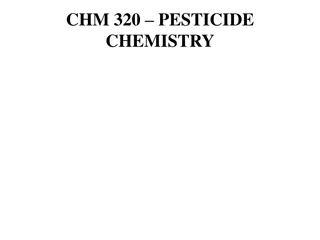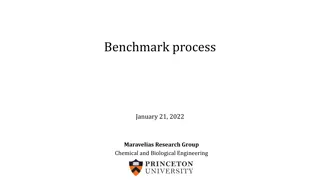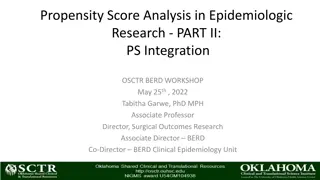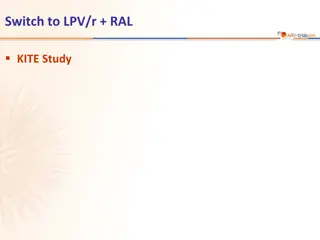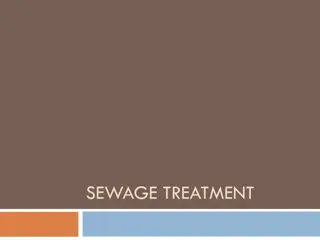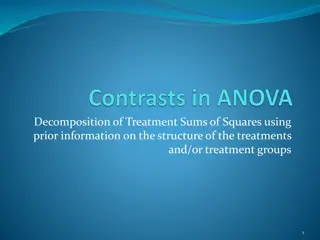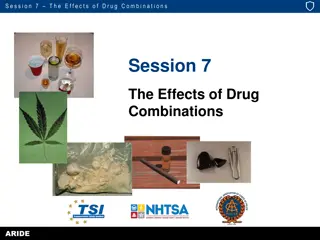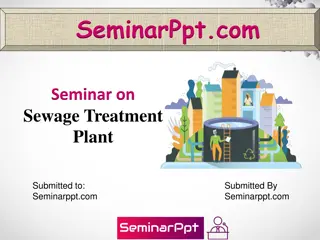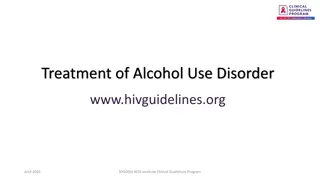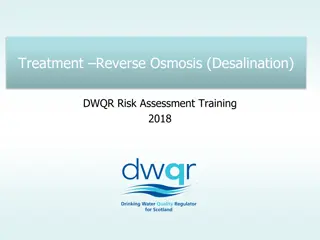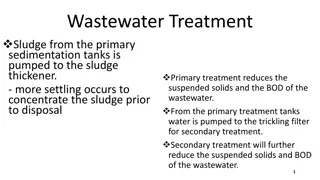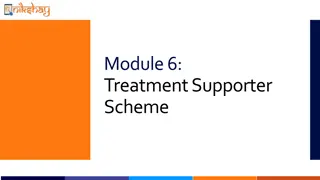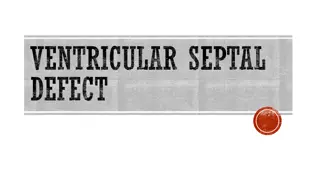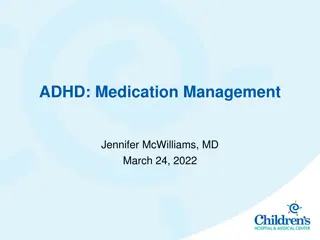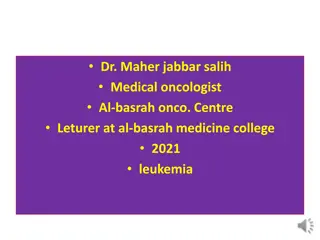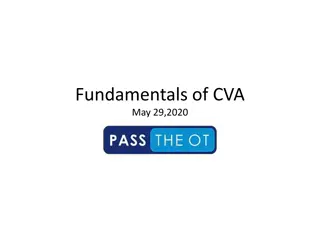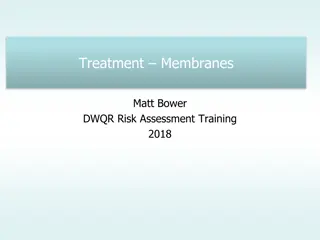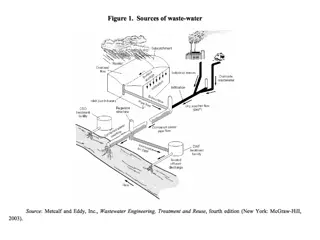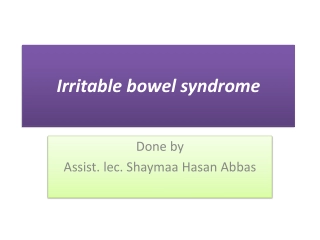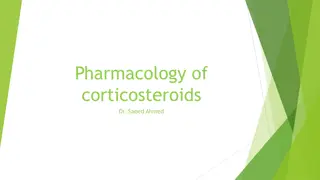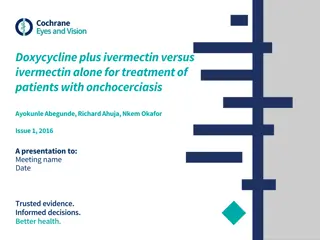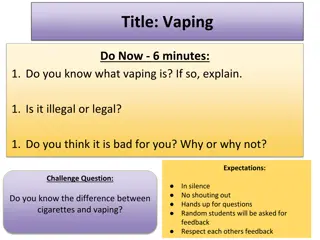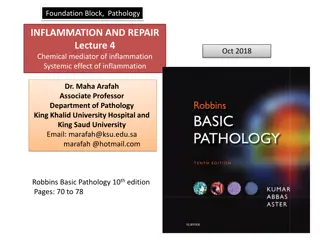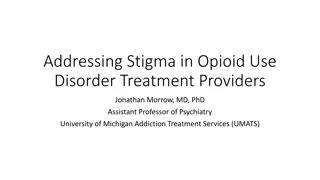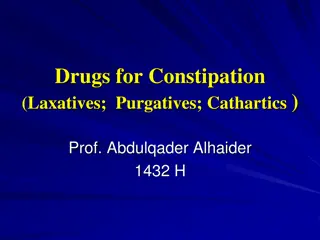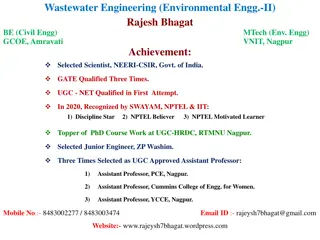Understanding Rodenticides: Types, Effects, and Treatment
Rodenticides are chemical preparations used for rodent control, primarily targeting mice and rats. They play a crucial role in managing rodent populations to prevent associated losses. The chapter covers an introduction to rodenticides, their classification into organic and inorganic types, mechanism of action, clinical signs of poisoning, diagnosis, and treatment methods. It discusses common organic rodenticides such as anticoagulants, fluoroacetic acid derivatives, and Vitamine D compounds, as well as inorganic rodenticides like arsenic compounds and elementary phosphorus. The toxic effects, clinical signs, and treatment options for different rodenticides are outlined, emphasizing the importance of using these chemicals judiciously to minimize harm to humans and animals.
Download Presentation

Please find below an Image/Link to download the presentation.
The content on the website is provided AS IS for your information and personal use only. It may not be sold, licensed, or shared on other websites without obtaining consent from the author. Download presentation by click this link. If you encounter any issues during the download, it is possible that the publisher has removed the file from their server.
E N D
Presentation Transcript
Rodenticides Dr. Kumari Anjana Assistant Professor Deptt. of Veterinary Pharmacology & Toxicology Bihar Veterinary College, Bihar Animal Sciences University, Patna
Content of the chapter Introduction Classification Mechanism of action Clinical signs Diagnosis Treatment
Introduction Rodenticides are chemical preparations used to destroy rodents, particularly mice and field rats. They are requiring to control the over population of rodents and to prevent losses caused by them. Rodenticides should be selectively toxic to rodents and non man and farm animals. there is no such rodenticides which fully meets this requirement.
Rodenticides are second only to insecticides in the prevalence of pesticidal exposure and poisoning of farm and domestic animals. Farm animals, pests and wild life often gain access to these poisons via the baits or the carcass of intoxicated animals or by malicious intent.
Classification Organic rodenticides: Anticoagulants- warfarin, diphacinone, difenacoum and brodifacoum. Fluoroacetic acid and its derivatives sodium fluroacetate and fluroacetamide. Vitamine D Compounds- ergocalcoferol and cholecalciferol. Alphanaphthylthiourea (ANTU) Bromothalin Strychnine Red squill Pyriminil Norbormide Crimidine Chloralose Inorganic rodenticides: Arsenic compounds - arsenic trioxide and sodium hydrogen arsenite. Elementary phosphorus Thallium sulphate Zinc phosphide
Arsenic compounds They have largely been replaced by substances less toxic to humans and domestic animals
Elementary phosphorus It is highly reactive and hazardous to all domestic animals, so it is less used as rodenticide. Phosphorus is rarely used. Yellow and white P types (fire works/crackers) are toxic to all animals. Red P is nontoxic. Mechanism of Toxicosis: Corrosive and protoplasmic poison: hepatotoxic. Clinical Signs: Vomiting, diarrhoea (haemorrhagic), convulsions. Death due to hepatic and renal failure. Garlic odour of gastric contents. The vomitus glows in dark. Treatment: 1% Cu SO4 as emetic, form non-absorbable copper phosphide complex. Gastric lavage: Gastric lavage with 0.01-0.1% KMnO4 or 0.2-0.4% CuSO4 solution, followed by activated charcoal and 30 min later saline chatharatic. Fat (favours P absorption) in diet should be avoided. abdominal pain, jaundice,
Thallium Sulfate (Thallitoxicosis) Thallium Sulphate is chemically similar to lead and is occasionally used as rodenticide. It causes generalized cellular toxicity. Dangerous. Affects GI, respiratory, bones/joints and nervous systems. Banned. Clinical Signs: Haemorrhagic gastroenteritis, abdominal pain, dyspnoea, blindness, tremors and convulsions. Treatment: Gastric lavagae with 1% sod. Iodide and 10% sod. iodide iv. Diethyl thiocarbazone (dithiazone, 70 mg/kg, PO tid) within 24 hr and prussian blue 100 mg/kg bid as oral aqueous suspension to enhance thallium excretion in faces.
Zinc phosphide It is one of the most widely used rodenticides in developing country because it is cheap and very effective. It is often recommended as the rodenticides of choice because it is fairly specific for rodents and there is no true secondary poisoning, except possibly in dog and cat. Liberation of phosphine gas in acid pH in stomach irritates GIT and causes CVS collapse.
Mechanism of action: Acute zinc phosphide toxicosis is due to the phosphine gas. phosphine gas is said to act as ageneral protoplasmic poison. It causes direct damage to membranes of blood vessels and erythrocytes leading to cardiovascular collapse. Phosphine also causes depression of CNS, irritation of lungs and damage to liver and kidneys. Clinical Signs: Vomiting, acidosis, abdominal pain, aimless running, howling, ataxia, dyspnoea, gasping and convulsions. Treatment: Calcium boro-gluconate and fluid therapy to reduce acidosis (2-4 litres of 5% soda bicarb. PO).
Warfain and Congeners Warfain and Congeners(pindone, coumafuryl, coumachloretc): Most commonly used, but potentially dangerous compounds. Mechanism of Toxicosis: It is also called as anticoagulant rodenticides: Basic coumarin or indanedione nucleus: Act as anti-vitamin K and interfere with synthesis of coagulationFactoros I, II, VII and X in liver and thus prevent conversion of prothrombin to thrombin resulting in failure of blood clotting generalized haemorrhages.
Clinical Signs: Anaemia, epistaxis and hematuria, weakness ataxia, colic and polypnoea. Treatment: Vitamin K1 @ 2.5-5 mg/kg iv or sc smallest possible needle at several locations to speed up absorption for 2 4 weeks. Fresh or frozen plasma @ 9 ml/kg or whole blood 20 ml/kg iv to replace clotting factors. Thoracocentesis to relieve dyspnoea due to hemothorax and artificial respiration with oxygen. hematomas, hemothorax,
Alpha NaphthylThiourea (ANTU) Mechanism of Toxicosis: it interferes with effective uptake of O2from pulmonary alveoli by producing massive oedema of lungs due to increase capillary permeability. ANTU undergoes metabolism bymicrosomal mixed function oxidases releasing atomic sulphur which damages the endothelium of alveolar capillaries leakage of fluid into alveoli (airways) pulmonary oedema (pneumothorax). This leads to formation of froth which further blocks the air passage and virtually the animals drawn in its own airways. It causes vomiting on empty stomach due to intense local gastric irritation, but poisoning occurs if ANTU is ingested after feeding. Clinical Signs: Moist rales, cyanosis, weakness, ataxia, rapid and weak pulse and subnormal temp. Treatment: Gastric lavage, osmotic diuretics (mannitol), atropine (0.02- 0.25 mg/kg sc) and keeping head inclined to facilitate drainage of fluids from lungs. adrenoreceptor antagonists to dilate pulmonary vessels.
Red Squill It is the ground bulbs of Urgenia maritime, contain cardiac glycoside, proscillaridin. Considered as the safest rodenticide (nontoxic to poultry, unpalatable to livestock, vomiting if cats/dogs ingest, rats are incapable of vomiting). Mechanism of Toxicosis: Vomiting, ataxia, paralysis, dyspnoea, convulsions, arrhythmia/failure. depression, cardiac Treatment: Gastric lavage / saline purgatives, atropine sc at 6-8 hr (prevent cardiac arrest).
Sodium Monofluoroacetate Mechanism of toxicosis: Blocks cellular energy production by interfering with TCA. It is incorporated as fluoroacetyl coenzyme A in place of normal acetyl COA which condenses with fluorocitrate which causes inhibition of aconitase. oxaloacetate to form Clinical Signs: Nervousness, restlessness, depression, prostration, weak and rapid pulse, convulsions and death due to cardiac arrest. Treatment: Emetics, gastric lavage, activated charcoal (0.5 gm/kg)
Bromethalin Mechanism of Toxicosis: Neurotoxin, uncouples oxidative phosphorylation in CNS. Increases CSF pressure pressure on neurons/axons impairment of impulse conduction paralysis and death. Clinical Signs: Vomiting, hyper excitability, muscle tremors, convulsions, hind limb hyperflexia, posterior paralysis, depression, paralysis and death. Treatment: Emetics, gastric lavage, and osmotic diuretics.
Metaldehyde Also used as a snail bait (molluscicide). Mechanism of Toxicosis: In stomach hydrolysed to acetaldehyde, which enters brain and reduces brain serotonin, nor-epinephrine and inhibitory transmitter GABA, causing excitation and hyper muscular activity. Clinical Symptoms: Nervous sings: Tremors, ataxia, rapid respirations and convulsions. Treatment: Emetics, gastric lavage, activated charcoal, activated charcoal. Diazepam 2-5 mg iv. Lactate Ringer sol or 5% glucose iv) to promote toxin excretion, combat dehydration and reduce acidosis induced by excessive muscular activity.
Strychnine Strychnine is alkaloid of seeds of Strychnos nuxvomica. It is convulsive poison. Violent death if ingested by pets. Once used as mammalicide (to kill stray dogs), but now banned as it causes violent death. Mechanism of Toxicosis: Potent (convulsive) nervous poison. Antagonism of central inhibitory transmitters glycine and GABA. Clinical Signs: Nervous signs (Excitement tonic convulsion depression - paralysis) Treatment: Activated charcoal, anticonvulsants (barbiturates), gastric lavage with 2% aq. tannic acid or dilute HCI or a 1:250 dilution of tincture iodine. Emetics are contraindicated. Gastric with sodium bicarbonate solution may increase absorption.





